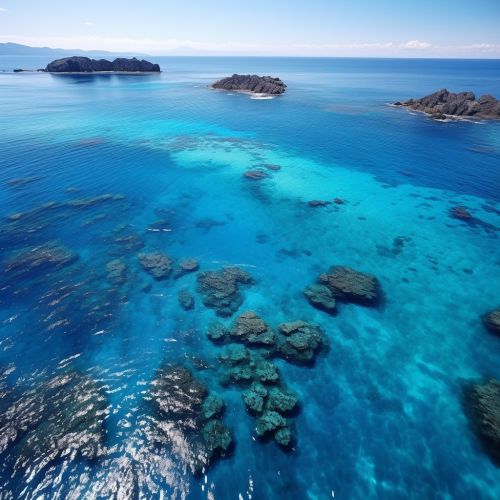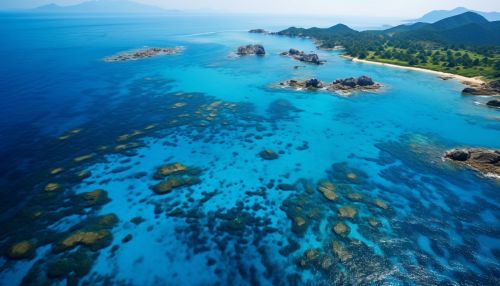Kuroshio Current
Overview
The Kuroshio Current, also known as the Japan Current or the Black Stream, is a north-flowing ocean current on the west side of the North Pacific Ocean. It is part of the North Pacific ocean gyre and is the western boundary current of the gyre. The Kuroshio is analogous to the Gulf Stream in the North Atlantic and is part of the North Pacific ocean gyre.
Physical Characteristics
The Kuroshio is a warm current—also known as a western boundary current—part of the North Pacific Subtropical Gyre. The current begins off the east coast of Luzon, Philippines, Taiwan and flows past Japan, where it merges with the easterly drift of the North Pacific Current. It transports warm, tropical water northward toward the polar region.


The current is known for its strong velocity and warm temperature. The velocity of the current varies, with an average speed of about 1 m/s (3.3 ft/s). The temperature of the Kuroshio Current varies depending on the season and the depth of the water. In the surface waters, temperatures range from 15 to 28 degrees Celsius.
Biological Significance
The Kuroshio Current has a significant impact on the climate and marine life of the regions it passes through. The current's warm temperatures and high salinity make it a rich environment for marine life. The current is known for its rich biodiversity, with numerous species of fish, including tuna and mackerel, relying on the current for migration and spawning.
The Kuroshio Current also has a significant impact on the climate of the regions it passes through. The current's warm temperatures and high salinity contribute to the mild and humid climate of Japan and the other regions it passes through.
Human Impact and Economic Significance
The Kuroshio Current has a significant impact on human activities, particularly in the areas of fishing, shipping, and climate study. The current's warm temperatures and high salinity make it a rich environment for fishing. The current is a major fishing ground for Japan, with numerous species of fish, including tuna and mackerel, being caught in the current.
The Kuroshio Current also plays a significant role in shipping. The current's strong velocity can aid ships traveling northward, while it can pose a challenge for ships traveling southward. The current is also a major factor in the dispersion of pollutants and debris in the ocean.
In terms of climate study, the Kuroshio Current is a major area of study for scientists interested in understanding the impacts of climate change on ocean currents. The current's warm temperatures and high salinity make it a key indicator of changes in the global climate system.
